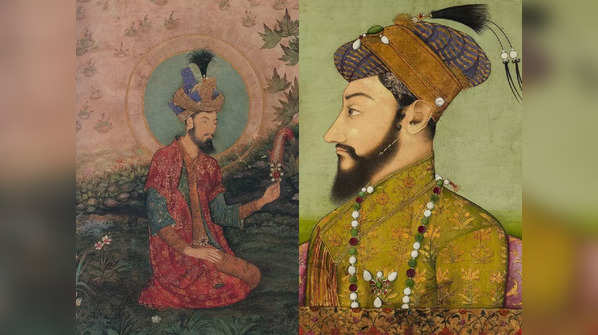From Babur to Aurangzeb, the reigns of top Mughals in a nutshell

The mighty Mughal empire
The Mughal Empire was one of the most powerful kingdoms in India in all of antiquity and produced an influential dynasty that changed the course of history in this country. It was founded by Babur, a descendant of Timur and Genghis Khan, in 1526 and lasted until 1857. The empire reached its peak of glory and prosperity under the rule of six great emperors: Babur, Humayun, Akbar, Jahangir, Shah Jahan, and Aurangzeb. Here is a brief overview of their reigns and achievements.
Image: Public Domain

Babur (1526-1530)
Babur was the first Mughal emperor and the founder of the empire. He was a skilled warrior and a poet who conquered the Delhi Sultanate and established his capital at Agra. He defeated the Rajputs at the Battle of Khanwa and expanded his territory to the Gangetic plains. He also introduced gunpowder, artillery, and gardens to India. He wrote his memoirs, the Baburnama, which is considered a masterpiece of Persian literature.
Image: Public Domain

Humayun (1530-1540, 1555-1556)
Humayun was the son and successor of Babur. He faced many challenges and setbacks during his reign, such as the rebellion of his brothers, the invasion of Sher Shah Suri, and the loss of his empire. He spent 15 years in exile in Persia, where he learned from the Safavid culture and art. He regained his throne in 1555 with the help of the Persian king, but died a year later after falling from the stairs of his library. He was buried in Delhi, where his magnificent tomb stands today.
Image: Public Domain

Akbar (1556-1605)
Akbar was the grandson of Babur and the greatest of the Mughal emperors. He ascended the throne at the age of 13 and consolidated his empire through military conquests, administrative reforms, and cultural patronage. He conquered most of northern and central India, including Gujarat, Bengal, Kashmir, and Deccan. He abolished the jizya tax on non-Muslims, promoted religious tolerance, and founded a new faith called Din-i-Ilahi. He was a patron of arts, literature, architecture, and science. He built the magnificent Fatehpur Sikri, the Agra Fort, and the Buland Darwaza. He also commissioned the Akbarnama, a history of his reign, and the Ain-i-Akbari, a record of his administration.
Image: Public Domain

Jahangir (1605-1627)
The son of Akbar, Jahangir was the fourth Mughal emperor. He was a lover of nature, art, and luxury. He continued his father’s policies of religious tolerance and cultural patronage. He also maintained good relations with the British East India Company, which established its first factory in Surat during his reign. He was known for his justice and generosity, as well as his addiction to opium and wine. He built many beautiful gardens, such as the Shalimar Gardens in Lahore. He also wrote his autobiography, the Tuzuk-i-Jahangiri, which gives a vivid account of his life and times.
Image: Public Domain

Shah Jahan (1628-1658)
Shah Jahan was the fith Mughal emperor, the son of and successor to Jahangir. He was a master of architecture and a lover of beauty. He shifted his capital from Agra to Delhi, where he built the Red Fort and the Jama Masjid. He also built the Taj Mahal, a mausoleum for his beloved wife Mumtaz Mahal, which is regarded as one of the wonders of the world. He expanded his empire to the south and the east, but also faced rebellions from his sons, especially Aurangzeb. He spent his last years in captivity in the Agra Fort, where he died in 1666.
Image: Public Domain

Aurangzeb (1658-1707)
Aurangzeb was the son of Shah Jahan and the sixth and last of the great Mughal emperors. He was a devout Muslim and a strict ruler who enforced the Sharia law and reimposed the jizya tax on non-Muslims. He also banned music, dancing, and painting in his court. He fought many wars to expand his empire, which became the largest in India’s history, covering almost the entire subcontinent. However, he also faced fierce resistance from the Marathas, the Sikhs, and the Rajputs, who challenged his authority and drained his resources. He died in 1707, leaving behind a vast but unstable empire that soon collapsed under the pressure of internal and external forces.
Image: Public Domain









